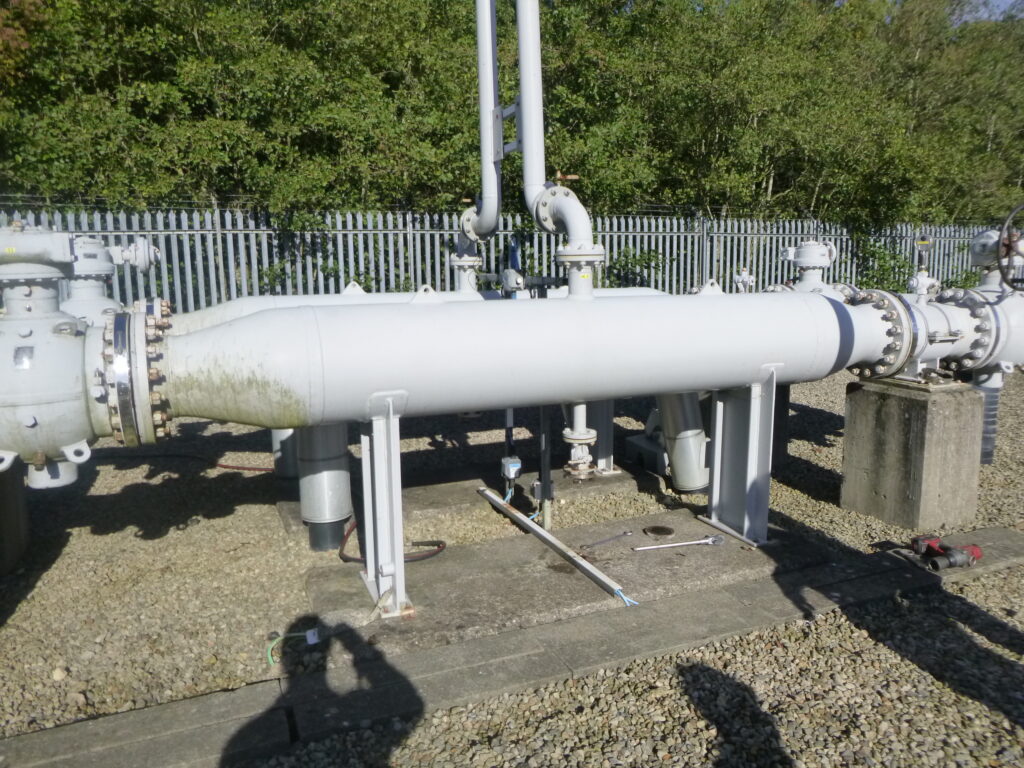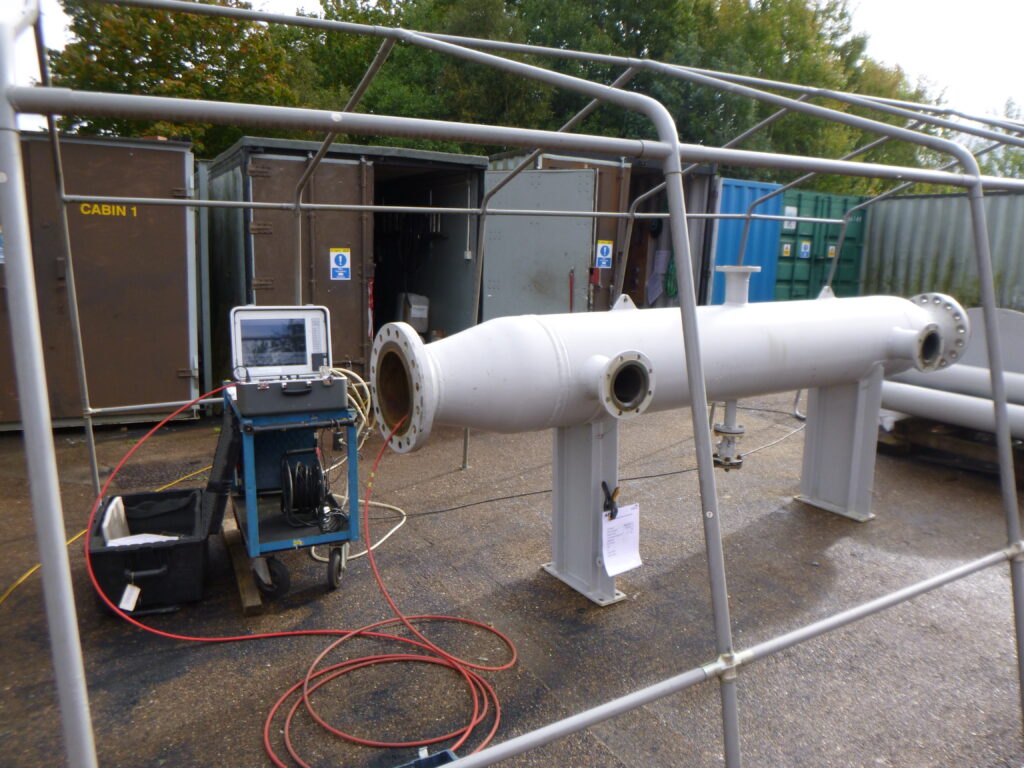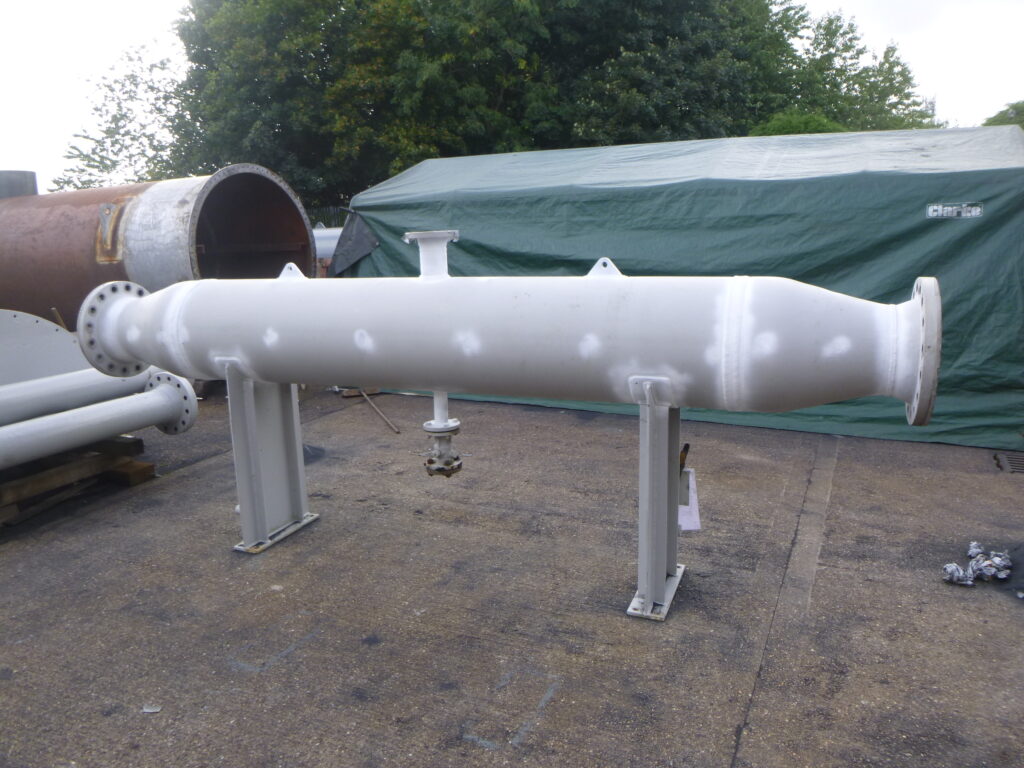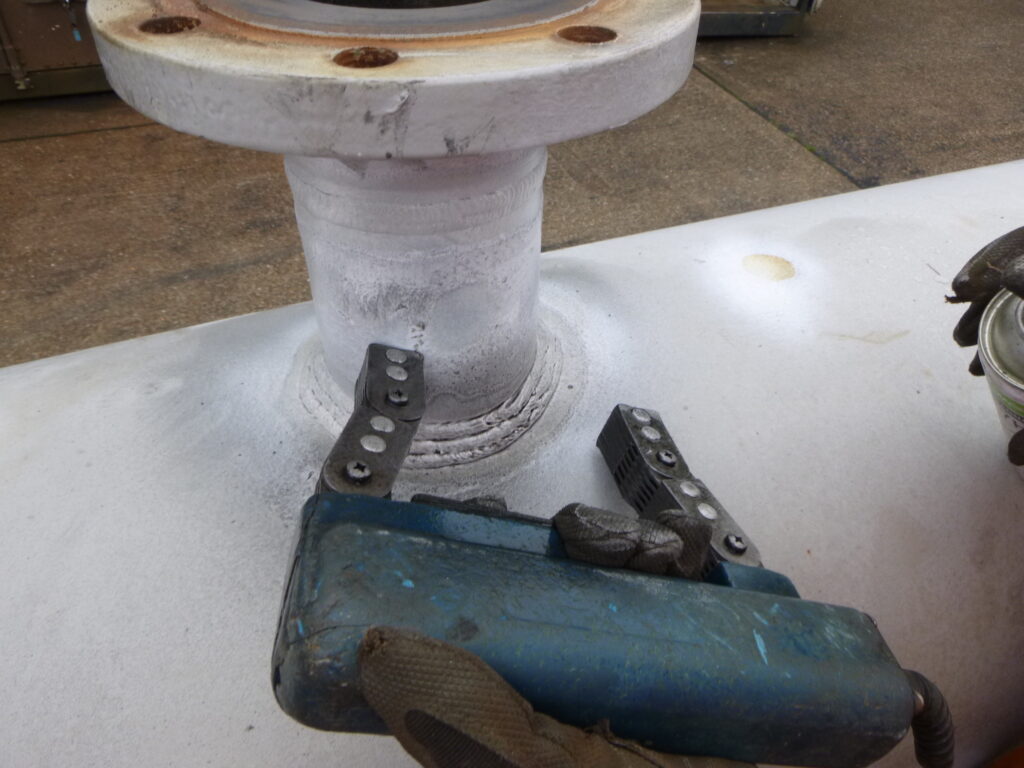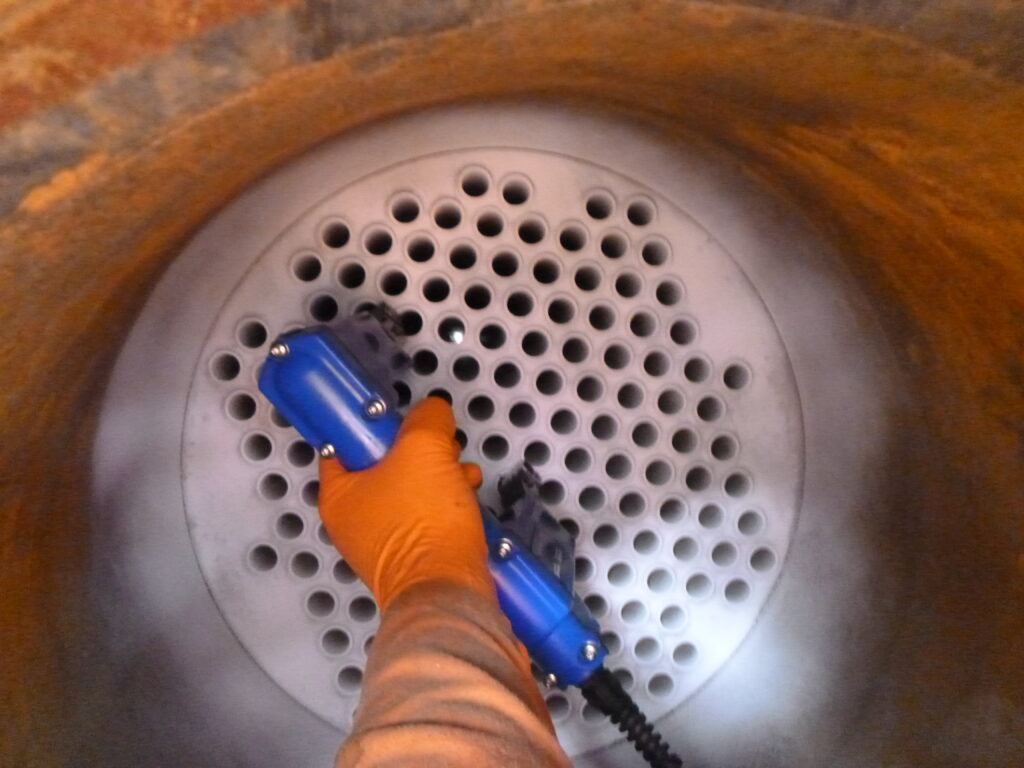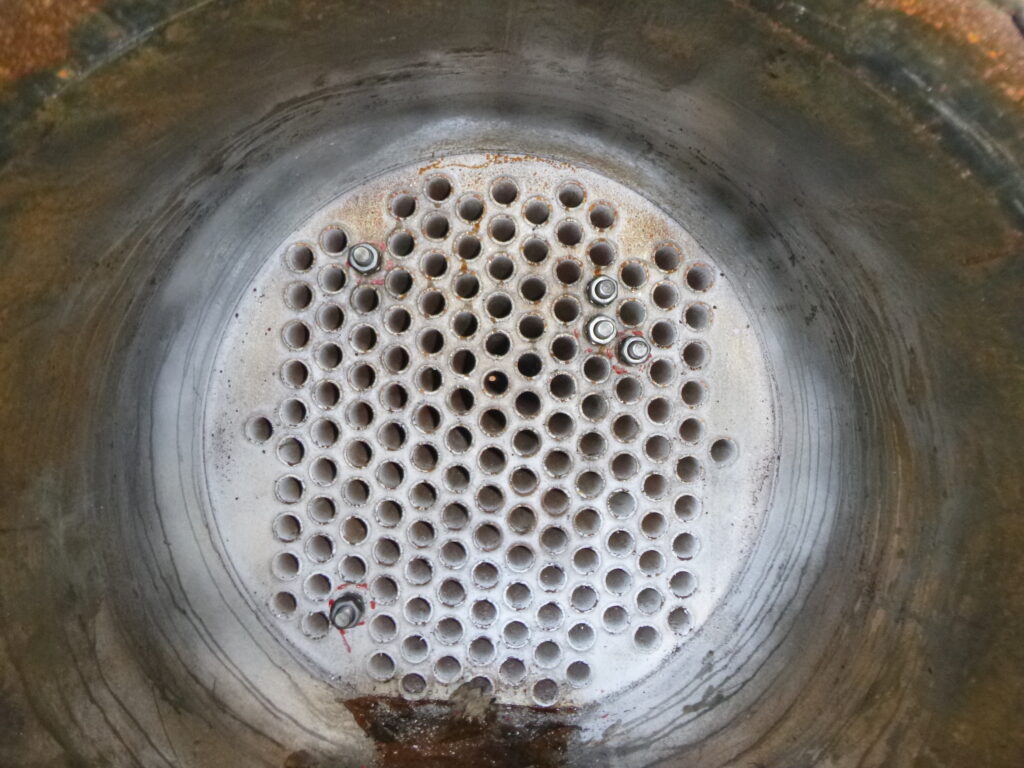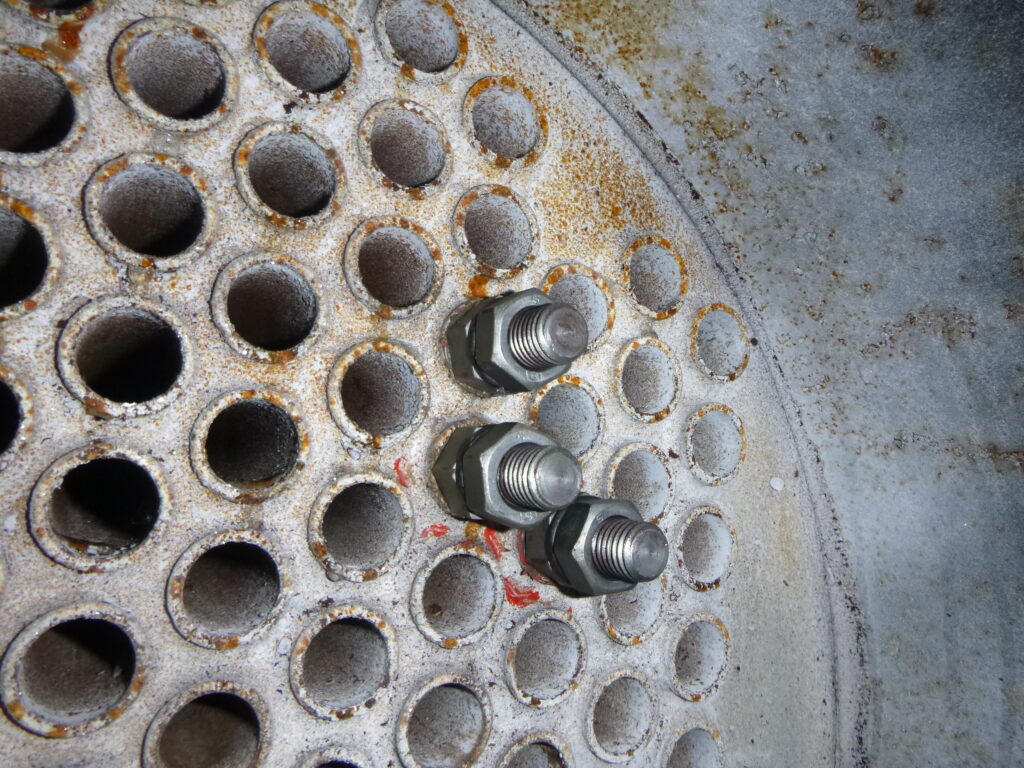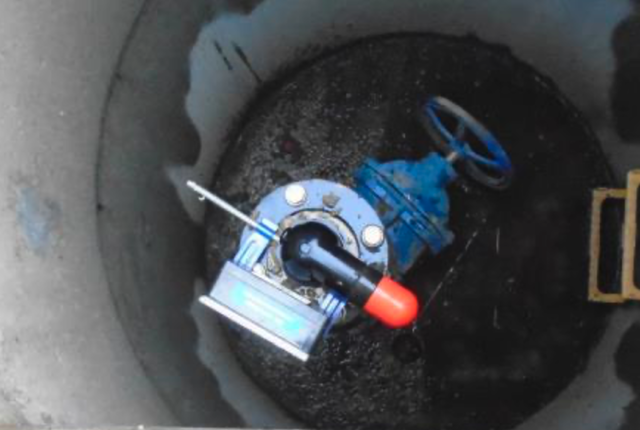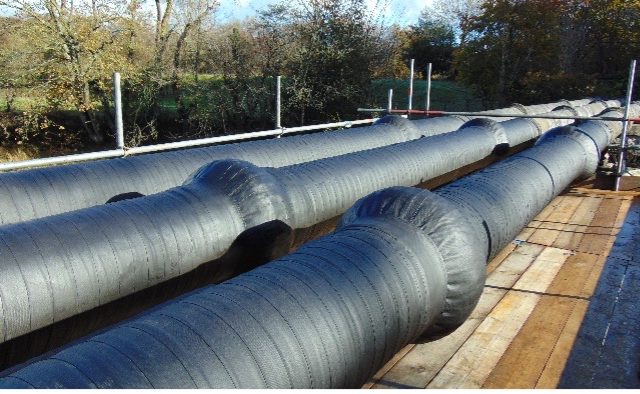Heat exchanger revalidation for utilities client
Overview
Advanced Engineering Solutions (AES) was contracted by a client in the utilities sector to carry out the revalidation of a heat exchanger.
As heat exchangers are classified as pressure vessels, they fall under the scope of the Pressure Systems Safety Regulations (PSSR), which require periodic inspections in accordance with a Written Scheme of Examination (WSoE). To maintain regulatory compliance, the client required this revalidation as part of their scheduled inspection programme.
Heat exchanger validation is a core service offering from AES. The company performs revalidations for all UK gas distribution network operators and is recognised for delivering a nationwide service that is high in quality, cost-effective, and dependable.
Scope of inspections
A team of five AES technicians ran a series of inspections on the client’s heat exchanger to check and ensure its ongoing integrity, including:
- Visual examination to Gas Industry VS02 standard
- Dinsearch™ inspection of the small diameter high pressure gas tubes to identify thinning of the tubes
- Magnetic Particle Inspection of all accessible welds to identify any surface breaking indications
- Ultrasonic wall thickness checks of the shell
- Pressure test of the low-pressure shell and high-pressure gas tubes
The Dinsearch™ inspection identified significant tube degradation, with some tubes experiencing up to 60% wall loss, requiring remedial intervention.
Solution
AES worked closely with the client to review available options for addressing the identified tube degradation. The choices included:
- Full replacement of the heat exchanger
- Replacement of the corroded tubes
- Installation of mechanical plugs to isolate the corroded tubes
While the client’s long-term objective was to replace the entire heat exchanger, long manufacturing lead times made immediate replacement unfeasible. As an interim solution, AES installed mechanical plugs into the five most severely affected tubes. This action prevented high-pressure gas from passing through the compromised sections, effectively eliminating the risk of gas leakage.
Although tube plugging does reduce heat exchanger efficiency, the performance impact was minimal as only 3% of the tubes were affected, making this a practical short-term solution.
Following the installation of the plugs, the unit underwent successful pressure testing and was reinstalled on-site, fully operational and safe for continued use until a permanent replacement could be implemented.
Challenges
One of the key challenges faced by the AES team was the time pressure associated with having critical equipment offline. Gas networks aim to minimise operational risk, so a fast turnaround was essential to restore system functionality as quickly as possible.
Additionally, any modifications to high-pressure gas systems are subject to strict regulatory control. All changes had to undergo independent approval and acceptance by the gas distribution network in accordance with the Management of New Works, Modifications and Repairs procedure. Coordinating and securing this approval introduced delays, as the process must be carefully managed and completed before any physical repair work can begin.
Outcome
Although the project was originally scheduled for a three-week turnaround, the full scope of remedial actions, including removal, inspection, regulatory approvals, repair, and reinstallation, extended the total duration to approximately ten weeks.
Despite the extended timeline, all work was completed ahead of the client’s PSSR inspection deadline. The asset was successfully revalidated and handed back to the client in fully operational condition, ensuring compliance and continued safe operation.
Click here to find out more about our heat exchanger revalidation services.
